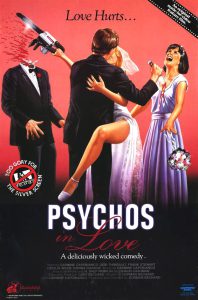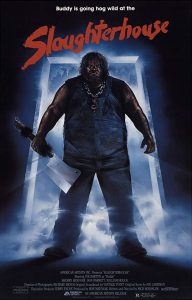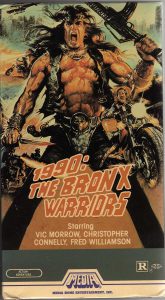Vendetta (1986) by #BruceLogan
w/#KarenChase #SandyMartin #RobertaCollins
A stuntwoman gets herself thrown into prison to avenge the death of her sister.
"All she wants is justice. All it takes is murder."#WomenInPrison#NotQuiteClassicCinema pic.twitter.com/6NtghYL8Ax
— Angus Kohm (@AngusKohm) July 24, 2021
Vendetta (1986) is, at heart, a Women in Prison film (or WIP). As I mentioned a while back, this is a genre that I have a particular interest in – and connection to – as I once wrote an important essay about it when I was a film student, and subsequently wrote an entire musical play poking fun at it (which was called Bad Girls Jailhouse and was first produced in 1994). That play started me on a long path of writing, producing and directing crazy musicals, which was my main focus for over ten years – but that’s another story.
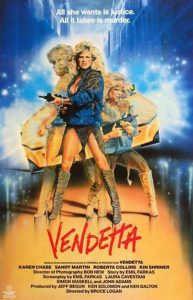 Vendetta is not one of the better known Women in Prison films. It came out a little late in the cycle. Caged (1950) is widely considered to be the first official entry into the genre, although there are earlier films that could (and should) be included, such as the wonderful pre code movie Ladies They Talk About (1933). But Caged really started things rolling, and was soon followed by other WIPs such as So Young, So Bad (1950), Women’s Prison (1955) and Reform School Girl (1957). The exploitation possibilities of the genre became clear to producers, and by the late 1960s there were a slew of R-rated WIPs released, such as 99 Women (1969), School for Unclaimed Girls (1969) and Love Camp 7 (1969) (which was also a sleazy Nazi movie, which oddly enough became a sub-genre of its own – but that’s another story).
Vendetta is not one of the better known Women in Prison films. It came out a little late in the cycle. Caged (1950) is widely considered to be the first official entry into the genre, although there are earlier films that could (and should) be included, such as the wonderful pre code movie Ladies They Talk About (1933). But Caged really started things rolling, and was soon followed by other WIPs such as So Young, So Bad (1950), Women’s Prison (1955) and Reform School Girl (1957). The exploitation possibilities of the genre became clear to producers, and by the late 1960s there were a slew of R-rated WIPs released, such as 99 Women (1969), School for Unclaimed Girls (1969) and Love Camp 7 (1969) (which was also a sleazy Nazi movie, which oddly enough became a sub-genre of its own – but that’s another story).
Needless to say, there were a lot of WIPs made in the 1970s, including Roger Corman produced masterpieces like The Big Doll House (1971), and Jonathan Demme‘s directorial debut Caged Heat (1974). There were so many great WIPs made in the ’70s that I could spend all day trying to talk about my favourites – but I’ll resist. The plentiful output continued into the 1980s, and included some of the very best efforts, such as The Concrete Jungle (1982), Reform School Girls (1986), and my personal favourite, Chained Heat (1983).
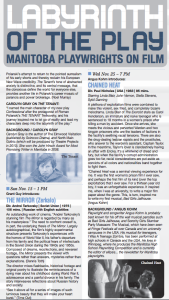 I first saw Chained Heat when I was 12 or 13, having rented it on Beta with a friend of mine. We loved it of course, and watched it two or three times before returning the tape to the store. I would later describe it as a seminal film-watching experience for me when I hosted a screening of the movie at Cinematheque in Winnipeg back in 2009. Notice that the programme guide mistakenly used a photo from Chained Heat 2 (1993), the vastly inferior sequel. The idea of these screenings was that playwrights (such as me) would host a film that was somehow important or influential in their development, or playwrighting career. Choosing Chained Heat was a no-brainer for me, as it directly influenced the first musical that I ever wrote. Thank you and R.I.P. to Dave Barber, who ran Cinematheque for almost 40 years and just died this past week (far too soon). I had known him since the early 1990s, and would often stop and talk film with him whenever we ran into each other. I will miss him forever.
I first saw Chained Heat when I was 12 or 13, having rented it on Beta with a friend of mine. We loved it of course, and watched it two or three times before returning the tape to the store. I would later describe it as a seminal film-watching experience for me when I hosted a screening of the movie at Cinematheque in Winnipeg back in 2009. Notice that the programme guide mistakenly used a photo from Chained Heat 2 (1993), the vastly inferior sequel. The idea of these screenings was that playwrights (such as me) would host a film that was somehow important or influential in their development, or playwrighting career. Choosing Chained Heat was a no-brainer for me, as it directly influenced the first musical that I ever wrote. Thank you and R.I.P. to Dave Barber, who ran Cinematheque for almost 40 years and just died this past week (far too soon). I had known him since the early 1990s, and would often stop and talk film with him whenever we ran into each other. I will miss him forever.
As the ’80s wore on, the Women in Prison genre seemed to dry up a little, although there were still a respectable number of titles released. Most of them were direct to video
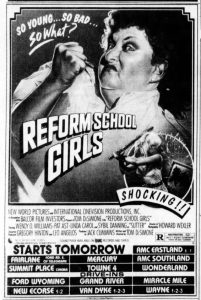 releases, and not as high quality in terms of production value. 1986 was a pretty good year, however. Reform School Girls, The Naked Cage (by the director of Chained Heat), and Vendetta were all released that year. Reform School Girls was by far the highest profile film of those three. I remember it playing in the theatres, and I managed to catch it on pay TV a little later. I also bought the soundtrack L.P. which featured Wendy O. Williams (who also starred in the movie) and Etta James (who did not). I found out about Vendetta by reading Video Trash & Treasures by L.A. Morse. He gave it a decent review, and I was eventually able to track down a copy on VHS.
releases, and not as high quality in terms of production value. 1986 was a pretty good year, however. Reform School Girls, The Naked Cage (by the director of Chained Heat), and Vendetta were all released that year. Reform School Girls was by far the highest profile film of those three. I remember it playing in the theatres, and I managed to catch it on pay TV a little later. I also bought the soundtrack L.P. which featured Wendy O. Williams (who also starred in the movie) and Etta James (who did not). I found out about Vendetta by reading Video Trash & Treasures by L.A. Morse. He gave it a decent review, and I was eventually able to track down a copy on VHS.
What I liked best about Vendetta, was that it was a bit of a variation on the usual Women in Prison formula. WIPs are usually about an innocent woman going to jail (often because of a man). This happens in Vendetta, but the innocent woman dies in prison near the beginning of the movie. The remainder of the film focuses on the dead woman’s sister, who happens to be a tough, high kicking Hollywood stuntwoman named Laurie (played by Karen Chase). Laurie gets herself sent to the same prison where her sister died ON PURPOSE in an effort to find out who killed her sister, and to get revenge. And if there’s anything I like almost as much as a Women in Prison yarn, it’s a good revenge story. In fact, it could almost be called a vigilante story, as the police, prison officials, and other powers-that-be, seem unable to solve Laurie’s sister’s murder – or even to acknowledge it as a murder – so it’s up to Laurie to take the law into her own hands. And I do like vigilante stories.
I’ve watched Vendetta (1986) several times over the years, and was very pleased to recently pick up a Blu-ray edition from the good folks at Shout Factory. The film just seems to get better with age, and certainly this is the best it’s ever looked and sounded. It may not be the most famous WIP, it may not be the most loved WIP, it may not even be the best WIP – but it is definitely a #NotQuiteClassicCinema classic, and one one my personal favourites. I would be happy to watch it on any (and every) #FridayNightAtTheHomeDriveIn.

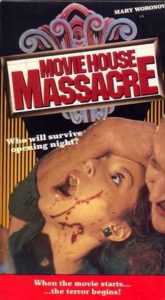

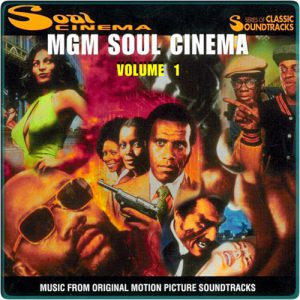
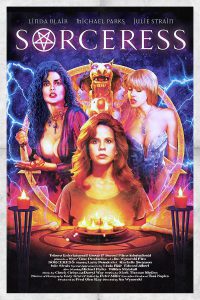
![The new Tales From The Crypt / Vault Of Horror [Double Feature] - Blu-ray from Scream Factory](http://certified.anguskohm.com/wp-content/uploads/2021/07/CryptVaultBRCover300dpi-239x300.png)
